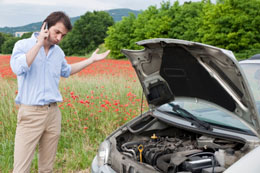
If you are the owner of a car, there are probabilities that you know the functions of your car parts briefly. We may well understand how important it is to maintain the car parts so that their functionality can be preserved with supreme efficiency. One such part of the car that you may be acquainted with is the fuel pressure regulator. For all those who are new to the wheeler terminology, a fuel pressure regulator serves to maintain optimum fuel pressure to meet the engine needs. According to the manufacture and the make of the vehicle the fuel pressure regulator can have a different location. In some esteemed models, the fuel pressure regulator is assembled on a fuel rail whereas in the other esteemed car manufacturing models, it is placed inside the fuel tank and is raised above the fuel pump. No matter where the regulator is situated, the function that it performs remain unchanged.
Signs of a Bad Fuel Pressure Regulator
There are certain symptoms of a bad fuel pressure regulator that you may like to know about. You need to change the regulator if you counter the following problems:
- The fuel pressure is inadequate;
- The fuel pressure is hiked resulting in excessive pressure;
- Black smoke is emitted by the exhaust pipe;
- The spark plugs may be fouled that in turn cause black smoke;
- The fuel pressure plummets as soon as the vehicle is put off;
- The fuel pressure builds up; however, the pace is procrastinating.
Procedure to Change a Fuel Pressure Regulator
Here are the steps and instructions to replace the fuel pressure regulator. You can do this all by yourself with these instructions at hand.
- It is mandatory you keep in mind that whenever you are working on a fuel pressure regulator, you must disconnect the entire fuel system to eradicate any chances of possible short circuit. The negative battery cable must be disabled with the help of a wrench.
- The next step is to loosen the fuel cap. Cover the periphery of the pressure relieve valve with a cloth and sue in a brass punch for the pressure to be relieved. If your question is related to the location of the pressure relieve valve; you could find it on the fuel pump.
- Now, in order to release the pressure, the brass punch is placed inside the release valve so that there is pressure that is exerted on the valve to release pressure.
- Also make sure that any bolts or screws with which the fuel pressure is mounted with, on the fuel pump, is removed.
- With an O ring, preferably a new one should be used in conjunction to the changed regulator, should be used. You may also use the O ring by lubricating it with some engine oil.
- With the new fuel pressure regulator in place, tighten the bolts to fix the system securely.
- Reinstall the regulator vacuum line and all the other connectors and fuel pressure lines.
- Clean the parts that you installed thoroughly well and ensure that there is no muck left. There should be no reminiscence of old parts so that the fuel pressure regulator runs as well as when it was new.
- Put on the ignition switch and reconnect the battery system. Leave the switch on for a couple of seconds. This will enable you to check if there are any leaks in the regulator. To ensure the work done is up to the mark, switch the ignition switch on and off at least two to three times.
You may complete the task with ease and thorough dedication. You will also be able to diagnose the problem that your fuel pressure regulator is going through, if you conclude that the device needs to be revamped.